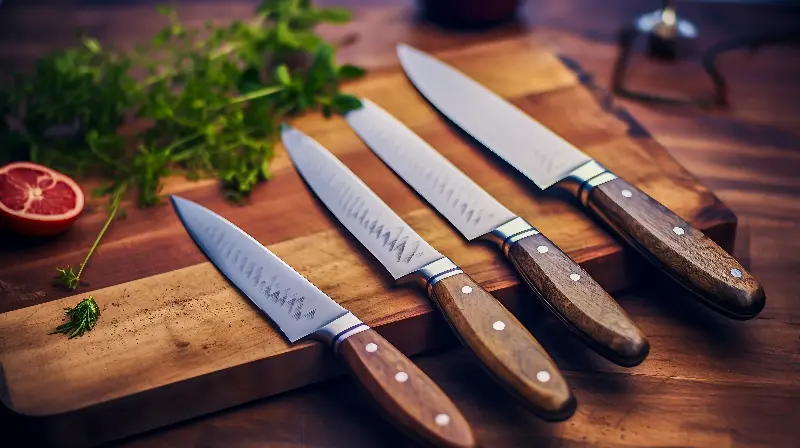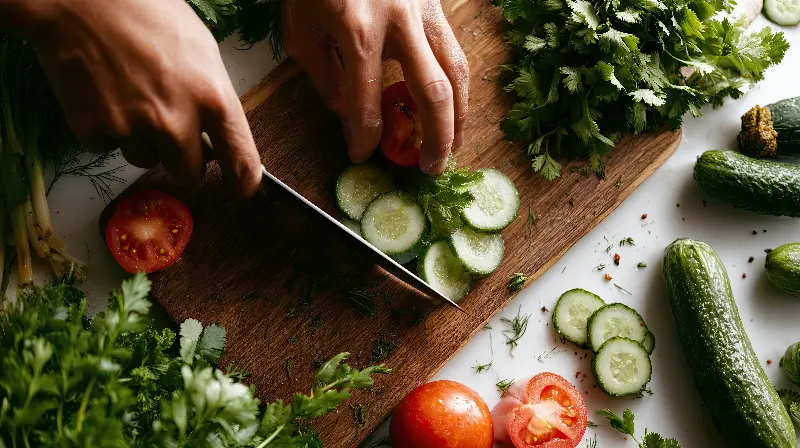
Ask any home cook or seasoned chef, and they’ll likely say the same thing: the kitchen knife is the true backbone of meal prep. Whether it’s a delicate julienne or a robust chop, every motion becomes easy—and, dare we say, even enjoyable—when your knife glides like it’s slicing through air. Yet, too many of us soldier on with dull blades, not realizing how a razor-sharp kitchen knife can transform not only the food we prepare, but also the pleasure we take in cooking. Understanding how to keep your kitchen knives at their sharpest is the secret to both quicker, stress-free cooking and consistent, impressive results.
Understanding Why Sharpness Matters
A sharp knife is much more than just a culinary luxury. With every cut, a sharp blade requires less force, which means you’re less likely to slip and injure yourself. Dull knives actually pose a greater risk because they tend to slide off food surfaces instead of biting cleanly. When you’re working with ultra-sharp knives, your slices are more precise, your ingredients maintain their integrity, and textures come alive from prep to plate.
If you’ve noticed your tomatoes squashing, your herbs bruising, or your cutting board looking like it survived a battle, the culprit is likely your blade. Sharp knives also allow for more uniform cuts, ensuring even cooking times and better flavors—since the cell walls of ingredients are sliced neatly, not torn apart.
Daily Habits For Razor-Sharp Knives
Maintaining ultra-sharp knives starts with prevention. Surprisingly, a lot of what dulls your knives happens outside of sharpening sessions.
Always use a proper cutting board—wood or soft plastic are your best bets. Avoid cutting on glass, stone, or metal surfaces, which can blunt even the finest steel edges in minutes. When it’s time for cleaning, go gentle. Wash knives by hand immediately after use, using mild soap, warm water, and a soft sponge. Dishwashers might seem convenient, but the heat, detergent, and jostling wreak havoc on both the blade and handle.
Store your knives properly, too. A knife block, magnetic strip, or individual blade guards are ideal. Tossing knives into a cluttered drawer causes blade edges to knock against other utensils, dulling or chipping them fast.

The Art Of Honing And Sharpening
Understanding the difference between honing and sharpening is a game-changer for any home chef. Honing is about realigning the microscopic edge of your blade. Every time you use your knife, the fine edge bends to one side or the other; a honing steel brings it back into line. This doesn’t remove material, but it restores your knife’s ‘bite’ and can be done before or after every use.
Sharpening, on the other hand, actually removes metal to create a new, razor-sharp edge. You only need to sharpen your knives a few times a year, depending on use. For most home cooks, this works out to every three to six months.
For the sharpening process itself, whetstones provide excellent control and don’t take much practice to get the hang of. Hold the blade at the correct angle—typically 15 to 20 degrees, depending on the knife—and draw it evenly along the stone. For those short on time, modern pull-through sharpeners work in a pinch, but avoid damaging your finer blades by selecting a sharpener suited to your knife’s steel. For extra peace of mind, professional knife-sharpening services exist, and a fresh-from-the-shop edge can last longer than DIY sharpening if maintained properly afterward.
Choosing The Right Knife For The Task
No matter how sharp, not every knife is the right one for every job. A chef’s knife is versatile, perfect for slicing, chopping, and dicing, while a paring knife excels at more delicate tasks, and a serrated knife rules the bread board. Using the correct knife preserves the sharpness of the blade for its intended use—your bread knife isn’t struggling through carrots, and your chef’s knife isn’t getting dulled on crusty loaves.
Investing in good-quality knives may require a little more upfront, but high-carbon steel or well-made stainless blades keep their edges longer and make maintenance easier. It’s the kitchen equivalent of driving a well-tuned car or wearing a fitted suit: the right tool for the right job always elevates your experience.

Take Your Cooking To The Next Level
Once you’ve experienced the ease of an ultra-sharp knife, there’s truly no going back. Chopping vegetables becomes meditative, slicing meat feels effortless, and even stacks of dinner-party prep seem less like a chore and more like an act of creation. Plus, the uniformity of your cuts gives your dishes a professional allure—not to mention improving their taste and texture.
Maintaining sharp knives might sound complicated, but a few simple habits go a long way. Careful cleaning, proper storage, regular honing, and occasional sharpening will keep your blades performing at their peak. With just a little attention, your kitchen knives will be ultra-sharp allies, making cooking faster, safer, and infinitely more enjoyable. Happy slicing!
